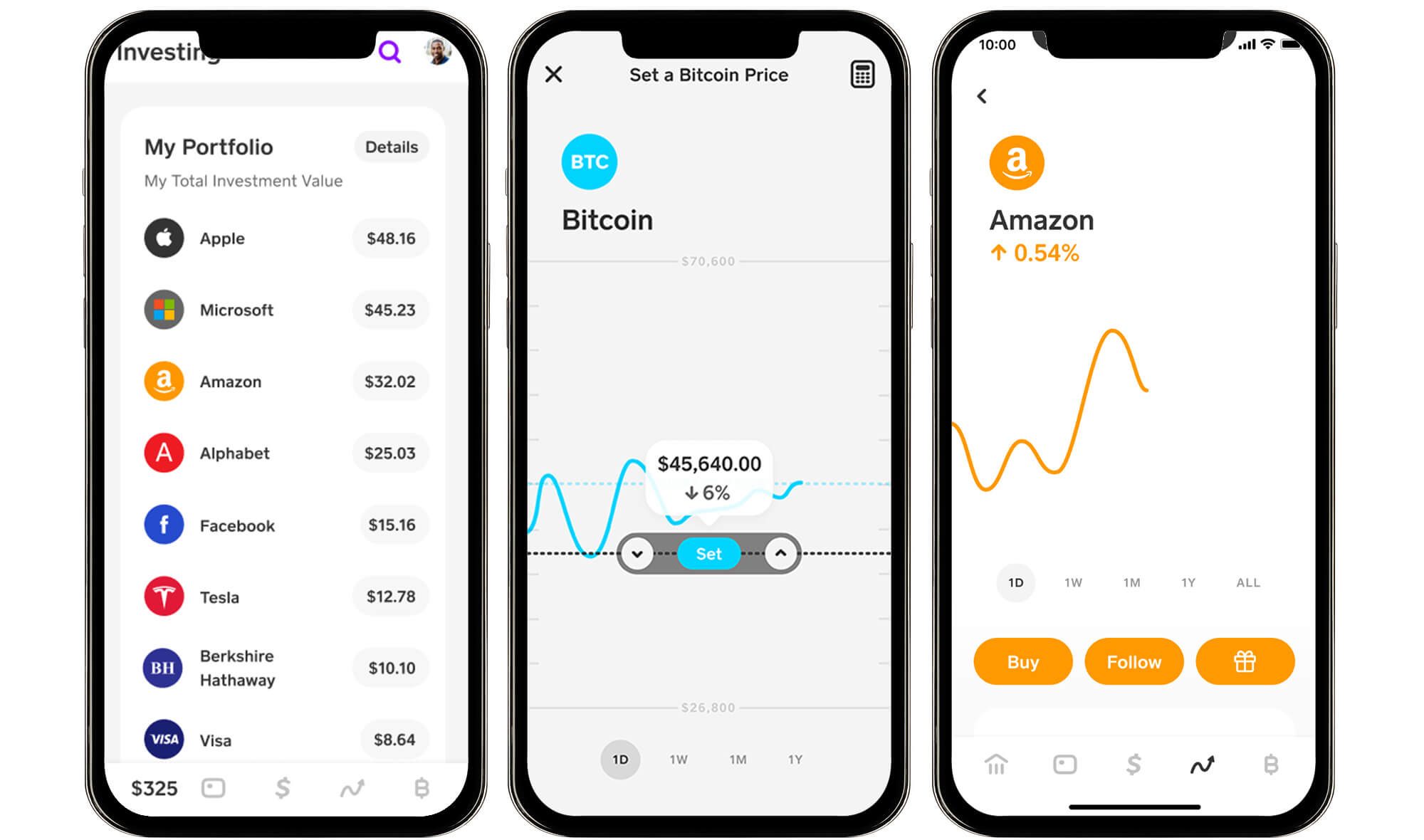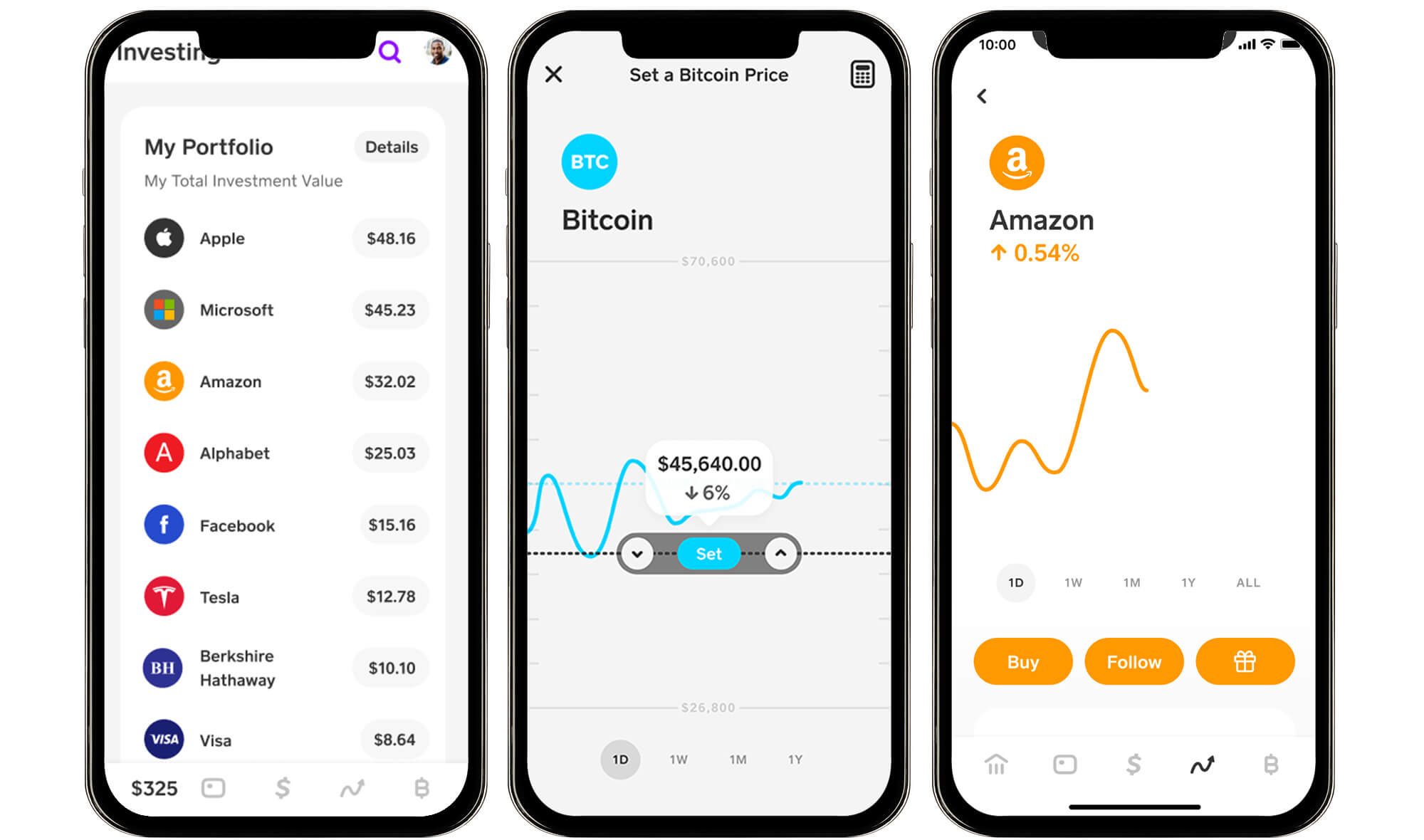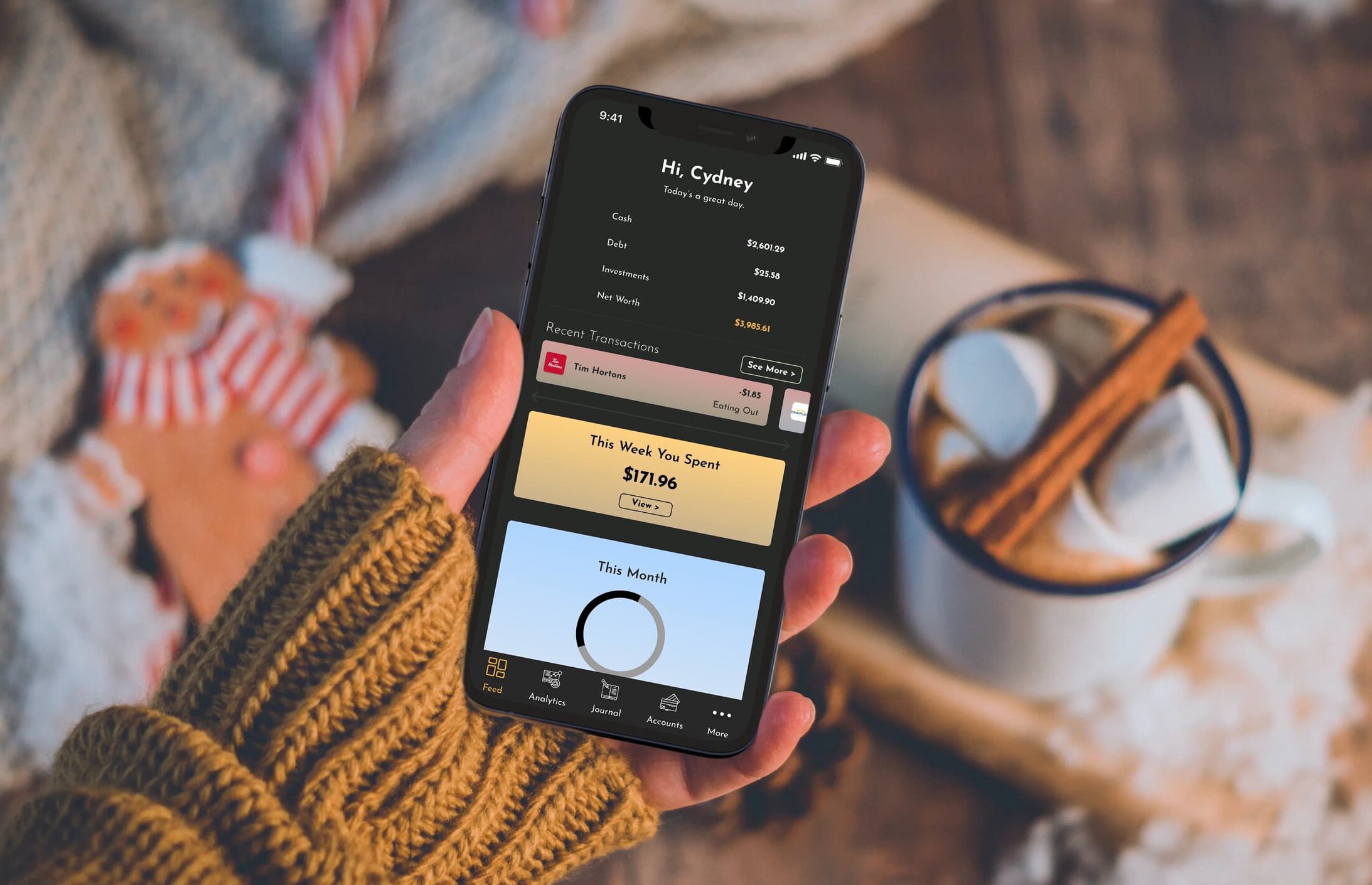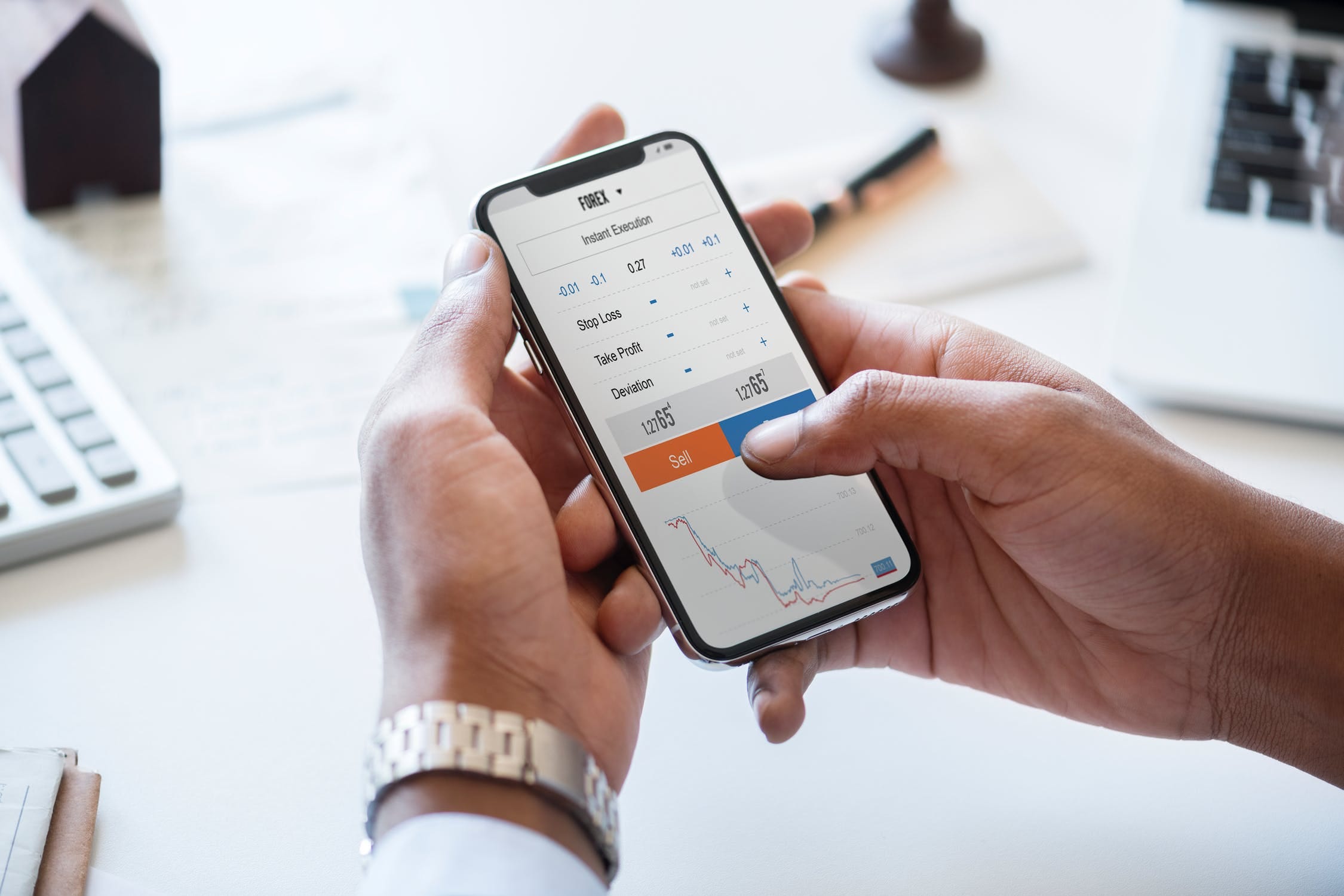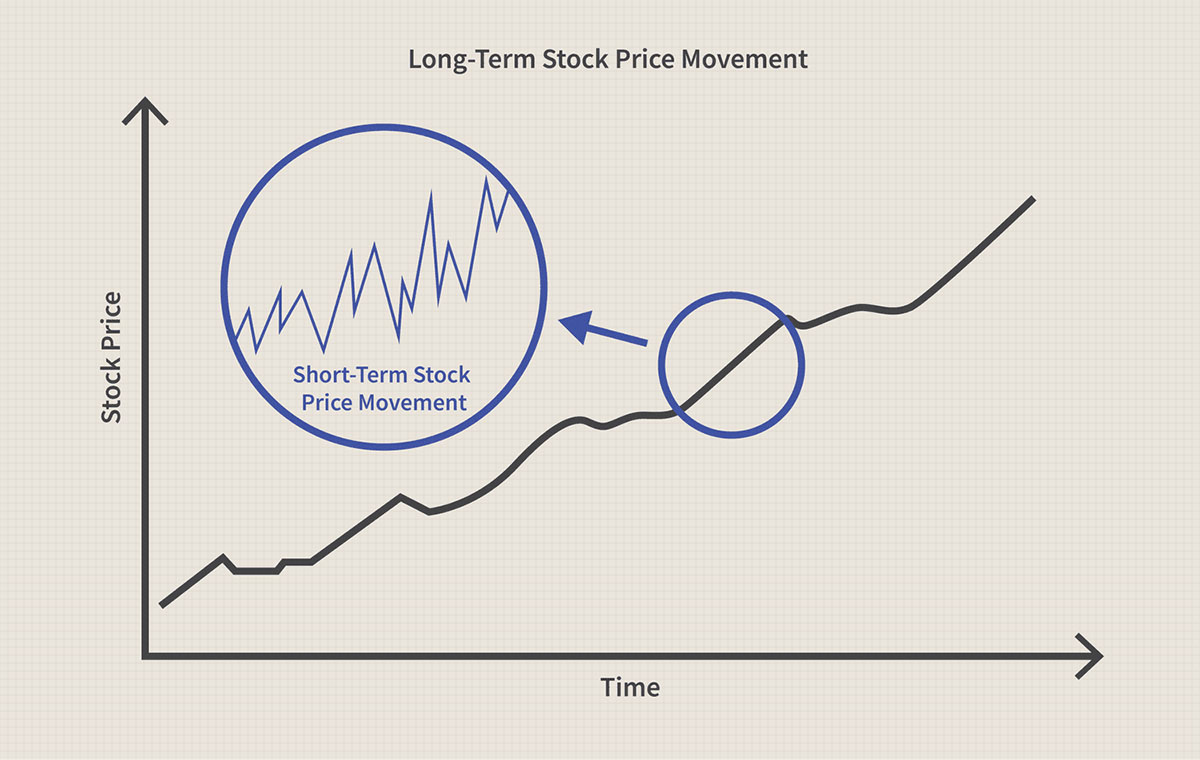

Finance
How To Create An Android Stock Market App
Published: November 24, 2023
Learn how to create an Android stock market app and expand your knowledge in finance with this comprehensive step-by-step guide.
(Many of the links in this article redirect to a specific reviewed product. Your purchase of these products through affiliate links helps to generate commission for LiveWell, at no extra cost. Learn more)
Table of Contents
- Introduction
- Step 1: Understanding the basics of stock market app development
- Step 2: Setting up the development environment
- Step 3: Designing the user interface
- Step 4: Implementing real-time stock data retrieval
- Step 5: Displaying stock market information
- Step 6: Adding user portfolio and watchlist functionality
- Step 7: Implementing stock search and filtering options
- Step 8: Enabling push notifications for stock alerts
- Step 9: Integrating user authentication and security
- Step 10: Testing and debugging the stock market app
- Conclusion
Introduction
In today’s fast-paced and interconnected world, the stock market plays a crucial role in the global economy. As more and more people become interested in investing and tracking the performance of stocks, the demand for stock market apps continues to rise. If you have a passion for finance and technology, creating your own Android stock market app can be a rewarding and profitable endeavor.
Building a stock market app can be an exciting project, but it also requires a solid understanding of both finance and app development. In this article, we will guide you through the process of creating an Android stock market app from scratch. Whether you are a seasoned developer looking to enter the finance industry or a finance enthusiast with a passion for technology, this step-by-step guide will help you bring your app to life.
Before we dive into the technical details, it’s important to understand the basic features and functionalities that make a stock market app successful. A well-designed app should provide users with real-time stock market information, user portfolios and watchlists, stock search and filtering options, push notifications for stock alerts, as well as secure user authentication. By incorporating these features into your app, you can deliver an exceptional user experience and distinguish your app from the competition.
Throughout this guide, we will cover the key steps involved in creating an Android stock market app. From setting up your development environment and designing the user interface to implementing real-time stock data retrieval and integrating user authentication, we will walk you through each stage of the app development process. By the end of this guide, you will have the knowledge and skills to build a functional and user-friendly stock market app.
Now, let’s get started on our journey to create an Android stock market app that will empower users to track and manage their investments with ease.
Step 1: Understanding the basics of stock market app development
Before diving into the development process, it’s important to have a solid understanding of the basic concepts and features that make a stock market app successful. In this first step, we will explore the key components of a stock market app and how they come together to provide a seamless user experience.
One of the fundamental features of a stock market app is the ability to provide real-time stock market information. This includes the current price, historical data, charts, and news related to a specific stock or the overall market. To accomplish this, you’ll need to integrate with a reliable stock market data provider such as an API. This data will be fetched and displayed to users in a concise and user-friendly manner.
Another crucial aspect of a stock market app is the ability to allow users to create and manage their investment portfolios. This typically involves functionalities like adding and tracking stocks, setting price alerts, and monitoring portfolio performance. A user-friendly and intuitive interface is essential to ensure that users can effortlessly navigate and interact with their portfolios.
In addition to portfolios, a stock market app should also provide users with the ability to create and customize watchlists. Watchlists allow users to track specific stocks they are interested in without necessarily owning them. This feature is beneficial for users who want to monitor the performance of certain stocks before making investment decisions. It’s important to allow users to add and remove stocks from their watchlists and receive real-time updates on their selected stocks.
An advanced feature that can enhance the functionality of a stock market app is the inclusion of stock search and filtering options. This allows users to easily search for specific stocks based on criteria such as company name, ticker symbol, industry, or market cap. The ability to filter and sort stocks based on various parameters can help users find stocks that align with their investment goals and strategies.
Lastly, security is of utmost importance when it comes to a stock market app. Users need to feel confident that their personal and financial information is protected. Implementing user authentication, encryption, and secure data storage are essential steps to ensure the security of user data and prevent unauthorized access.
By understanding the basic features of a stock market app, you can begin planning and designing the user interface and functionality of your app. In the next step, we will delve into setting up the development environment to start building your Android stock market app.
Step 2: Setting up the development environment
Once you have a clear understanding of the features and functionality you want to include in your stock market app, it’s time to set up your development environment. This step is crucial to ensure that you have the necessary tools and infrastructure to build and test your app effectively.
First, you’ll need to have the Android development tools installed on your computer. This includes the Android Studio IDE (Integrated Development Environment), which provides a comprehensive set of tools to develop, debug, and test Android apps. Android Studio also comes with the Android SDK (Software Development Kit), which contains the necessary libraries, APIs, and system components required for Android app development.
To download Android Studio, simply visit the official website and follow the installation instructions tailored to your operating system. Once installed, you’ll be ready to start creating your stock market app.
Next, you’ll need to set up an Android Virtual Device (AVD) to test your app on a virtual Android device. The AVD simulates various device configurations and Android versions, allowing you to see how your app performs across different devices. Android Studio provides an AVD Manager that allows you to create, edit, and manage virtual devices. You can choose from a range of pre-configured virtual device profiles or create your own custom profile based on your requirements.
Additionally, you’ll need to have a version control system in place to track changes and collaborate with other developers if needed. Git is a popular version control system that you can integrate with Android Studio. Setting up a Git repository for your project will allow you to easily manage and share your codebase.
Lastly, consider using a project management tool to keep track of tasks, milestones, and deadlines. Tools like Trello or Asana can help you stay organized and ensure that your development process is streamlined. They also facilitate collaboration and communication among team members if you are working on the app as part of a team.
By setting up your development environment properly, you lay the foundation for a smooth and efficient app development process. With all the necessary tools and infrastructure in place, you’ll be ready to move on to the next step: designing the user interface of your stock market app.
Step 3: Designing the user interface
The user interface (UI) of your stock market app is crucial as it directly impacts the user experience. A well-designed and intuitive UI will not only enhance usability but also attract and retain users. In this step, we will explore the key considerations and best practices for designing the UI of your stock market app.
Start by analyzing the user flow and identifying the core features and functionality that should be easily accessible to users. Consider organizing your app’s interface into logical sections or tabs, allowing users to navigate seamlessly between different screens. This ensures that users can quickly and intuitively access the stock market information, portfolios, watchlists, and other essential features of your app.
When designing the UI, keep in mind the principles of simplicity and minimalism. A cluttered or complex interface can confuse and overwhelm users, leading to a poor user experience. Use a clean and uncluttered layout, and prioritize the most important information and actions to be displayed prominently. This will help users focus on what matters most and make it easier for them to interact with your app.
Consider utilizing intuitive icons and visual cues to guide users and make the app more visually appealing. Icons can represent different actions or functionalities, making it easier for users to understand and navigate your app. Use consistent and recognizable iconography to provide a cohesive and user-friendly experience.
Color schemes and typography also play a significant role in the overall visual appeal and usability of your app. Choose colors that align with your app’s branding and create a visually pleasing and cohesive design. Consider using appropriate typography that is readable across different device sizes and ensures a comfortable reading experience for users.
Responsive design is essential in ensuring that your app adapts well to different screen sizes and orientations. This includes optimizing the layout and elements for both smartphones and tablets. Ensure that the UI elements are appropriately sized and spaced to provide a comfortable and intuitive experience on various devices.
Lastly, invest time in user testing and gathering feedback during the design process. Conducting usability tests with potential users can help identify areas for improvement and ensure that your UI meets their needs and expectations. Feedback from users will allow you to iterate and refine your design to deliver the best possible user experience.
By following these best practices and considering the needs of your target users, you can design a user-friendly and visually appealing UI for your stock market app. Once the UI is in place, you can move on to the next step: implementing real-time stock data retrieval to provide up-to-date market information to your users.
Step 4: Implementing real-time stock data retrieval
One of the key features of a stock market app is the ability to provide users with real-time and accurate stock market data. In this step, we will explore the process of implementing real-time stock data retrieval in your Android app.
To retrieve real-time stock data, you will need to integrate your app with a reliable stock market data provider. There are several popular APIs available that offer real-time stock data, such as Alpha Vantage, Yahoo Finance API, or IEX Cloud. Research and choose a provider that suits your needs in terms of data coverage, reliability, and ease of integration.
Once you have selected a stock market data provider, you will need to sign up for an API key. This key acts as a unique identifier for your app and allows you to make API calls to retrieve stock data. Make sure to familiarize yourself with the provider’s API documentation, as it will provide details on how to authenticate API requests and the available endpoints for retrieving stock data.
In your app, you will need to make asynchronous API calls to fetch stock data. Android provides several networking libraries, such as Retrofit or Volley, that make it easy to handle API requests and responses. You will need to use the HTTP GET method to send a request to the stock market data provider’s API and receive the data response in JSON format.
Once you receive the stock data response, you’ll need to parse the JSON data and extract the relevant information, such as stock symbols, prices, and other market data. You can use JSON parsing libraries in Android, such as Gson or Jackson, to simplify the process of extracting data from the JSON response.
To ensure that the stock market data remains up to date, you can implement background services or periodic API calls to refresh the data at regular intervals. This ensures that users have access to the latest market information whenever they open the app or view a specific stock.
Remember to handle error scenarios, such as network connection issues or API request failures, gracefully. Display informative error messages to users and provide appropriate fallback options, such as cached data or offline mode, to ensure a smooth user experience even in challenging circumstances.
By implementing real-time stock data retrieval in your stock market app, you empower users with accurate and timely market information. In the next step, we will explore how to display the stock market information to users in a clear and user-friendly manner. Stay tuned!
Step 5: Displaying stock market information
Once you have successfully implemented real-time stock data retrieval in your Android stock market app, it’s time to display the retrieved information to users in a clear and user-friendly manner. In this step, we will explore how to design and present stock market information effectively in your app.
Start by determining the key stock market information you want to display. This may include the current stock price, daily change in price (both in absolute and percentage terms), volume, market cap, and other relevant data. Prioritize the most important information and consider using visual elements, such as charts or graphs, to provide users with a quick and intuitive overview of the stock’s performance.
Organize the stock market information in a logical and visually appealing layout. You may choose to display the data in a list view or a grid view, depending on the design and functionality of your app. Use appropriate spacing, font sizes, and colors to ensure the readability of the information and make it easily scannable for users.
Consider providing users with additional details and historical data of the stock. This may include a detailed stock chart showing price movements over a given time period, news articles related to the stock, or financial ratios and indicators for in-depth analysis. By offering comprehensive information, you enhance the value of your app and provide users with the tools they need to make informed investment decisions.
Implement interactive features to enhance the user experience. For example, allow users to save or “favorite” stocks, enabling them to easily access their preferred stocks in the future. Implement gestures, such as swipe-to-refresh, to update the stock information on-demand, ensuring that users always have access to the latest data.
Ensure that your app optimizes the display of stock market information for different device sizes and screen orientations. Responsive design principles will help ensure a consistent and user-friendly experience across various devices, including smartphones and tablets.
Consider implementing search and sorting functionalities to allow users to filter and find specific stocks based on their preferences. This will enhance the usability of your app and make it easier for users to locate the stocks they are interested in.
By designing a visually appealing and intuitive interface, organizing stock market information effectively, and incorporating interactive features, you can create a compelling and user-friendly stock market app. The next step will cover user portfolio and watchlist functionality, allowing users to track and manage their investments. Stay tuned for more!
Step 6: Adding user portfolio and watchlist functionality
One of the key features of a stock market app is the ability for users to track and manage their investments. In this step, we will explore how to incorporate user portfolio and watchlist functionality into your Android stock market app.
A user portfolio allows users to track the performance of their investments. Users can add stocks to their portfolio, specify the quantity and purchase price, and monitor the current value and profit/loss of their holdings. Implement a simple and intuitive interface that allows users to easily add, edit, and delete stocks from their portfolio.
Consider displaying the overall portfolio performance, including the total value, percentage gain/loss, and any dividends received. You may also choose to display a breakdown of individual stock holdings within the portfolio, including the respective gains/losses and allocations.
Implement the ability for users to set price alerts for stocks in their portfolio. Price alerts will notify users when a stock reaches a specified price level, allowing them to stay informed and make timely investment decisions. Users should be able to define the price threshold and choose their preferred method of notification, such as push notifications or email alerts.
In addition to the portfolio functionality, incorporate watchlist functionality into your app. A watchlist allows users to monitor stocks they are interested in, even if they don’t currently hold them in their portfolio. Users can add stocks to their watchlist and receive real-time updates on the price movements. Implement sorting and filtering options to allow users to prioritize and organize their watchlist based on their preferences.
Consider providing users with actionable insights and analysis for the stocks in their portfolio and watchlist. This may include relevant news articles, company announcements, analyst ratings, or financial ratios. By providing valuable information, you enhance the app’s utility and help users make informed investment decisions.
Ensure that the portfolio and watchlist functionalities are synchronized across devices. Implement user authentication and secure data storage to allow users to access their portfolios and watchlists from multiple devices without any hassle. This will provide a seamless experience and enable users to stay updated on their investments.
By incorporating user portfolio and watchlist functionalities into your stock market app, you provide users with a comprehensive tool to track and manage their investments effectively. The next step will cover stock search and filtering options, allowing users to explore and discover stocks based on their preferences. Stay tuned for more!
Step 7: Implementing stock search and filtering options
To make your stock market app more user-friendly and enable users to discover and explore stocks efficiently, implementing stock search and filtering options is essential. In this step, we will explore how to incorporate these functionalities into your Android stock market app.
Start by implementing a search feature that allows users to search for specific stocks based on criteria like company name, ticker symbol, industry, or market cap. Provide a search bar where users can enter their search queries and display relevant results in real-time. Utilize an efficient search algorithm or API to ensure fast and accurate search results.
Consider implementing an autocomplete functionality that suggests possible stock names or ticker symbols as the user types in the search bar. This enhances the user experience by helping users find the stocks they are looking for more quickly and reduces the chances of errors in manual entry.
Allow users to filter and sort stocks based on various parameters such as price, market capitalization, volume, or industry. Provide filter options in a user-friendly interface, allowing users to select their desired criteria and instantly see the filtered results. Also, implement sorting options like ascending or descending order to enable users to organize stocks based on their preferences.
To optimize the search and filtering functionalities, consider caching the stock data locally on the device. This way, users can access stock information quickly, even when they are offline or experiencing a slow internet connection. Implement a system to periodically sync the cached data with the latest information to ensure that users have up-to-date data when online.
Ensure that the search and filtering functionalities are seamlessly integrated with the rest of the app. Users should be able to easily add filtered stocks to their portfolio or watchlist and access relevant stock market information for their selected stocks.
Display search and filter options in an intuitive and visually appealing manner. Use clear labels and icons to guide users in using these features effectively. Consider incorporating interactive elements like sliders or dropdown menus to enhance the user experience and make the app more engaging.
By implementing stock search and filtering options, you empower users to explore and discover stocks that align with their investment goals and preferences. The next step will cover enabling push notifications for stock alerts, keeping users informed of any significant changes in their selected stocks. Stay tuned for more!
Step 8: Enabling push notifications for stock alerts
One of the key functionalities of a stock market app is the ability to provide timely alerts to users regarding important changes in their selected stocks. Push notifications play a crucial role in keeping users informed and engaged. In this step, we will explore how to enable push notifications for stock alerts in your Android stock market app.
Start by integrating a push notification service into your app. There are several push notification services available, such as Firebase Cloud Messaging (FCM) or OneSignal, that provide easy-to-use APIs for sending notifications to Android devices. Choose a service that suits your needs in terms of ease of integration, scalability, and delivery reliability.
Implement user preferences for stock alerts, allowing users to choose the types of notifications they want to receive. This could include price threshold alerts, daily market updates, news alerts, or dividend notifications. Provide a user-friendly settings page where users can easily enable or disable specific types of alerts based on their preferences.
When a user sets up a stock alert, make an API call to the stock market data provider’s API to fetch the latest stock data. Compare the fetched data with the user-defined criteria, such as a price threshold, and trigger a push notification if the criteria are met. Ensure that these API calls are made efficiently and at appropriate intervals to avoid unnecessary network usage and conserve device resources.
Craft concise and informative push notifications that provide users with relevant details about the stock alert. Include the stock’s name or symbol and the specific event that triggered the alert, such as a price reaching a certain level or a news article about the stock. It’s important to strike a balance between being informative and avoiding notification overload, so users aren’t overwhelmed by too many alerts.
Consider implementing a notification center within your app, where users can view past notifications and manage their preferences. This allows users to review and reference previous alerts, ensuring that they don’t miss any important updates even if they were unable to check them immediately.
Ensure that push notifications adhere to platform-specific guidelines and best practices. This includes respecting do-not-disturb hours, providing the ability for users to easily opt out of receiving notifications, and using appropriate notification priority levels to avoid interrupting users unnecessarily.
By enabling push notifications for stock alerts, you keep users engaged and informed about important changes in their selected stocks. In the next step, we will explore how to integrate user authentication and security features to protect user data and ensure a secure user experience. Stay tuned for more!
Step 9: Integrating user authentication and security
Protecting user data and ensuring a secure user experience is of utmost importance in any stock market app. Integrate user authentication and security features to safeguard user information and provide a seamless and secure environment. In this step, we will explore how to integrate these features into your Android stock market app.
Start by implementing a user authentication system that requires users to create an account and sign in before accessing the app’s full features. This can be done using common authentication methods, such as email and password, or by integrating social login options like Google Sign-In or Facebook Login. Implement secure password storage by hashing and salting passwords to protect users’ login credentials.
Consider implementing additional security measures, such as two-factor authentication, to provide an extra layer of protection for user accounts. Two-factor authentication requires users to verify their identity through a second factor, such as a time-based one-time password (TOTP) or a text message code, in addition to their login credentials.
Encrypt user data, both in transit and at rest, to ensure that sensitive information is secure. Use SSL/TLS protocols to encrypt data transmitted between the app and the server, protecting user data from potential eavesdropping or man-in-the-middle attacks. Implement strong encryption algorithms when storing user data locally on the device or on a server to protect against unauthorized access.
Securely store user credentials and sensitive data on the device. Android provides a built-in KeyStore API that allows for secure storage of cryptographic keys and certificates. Utilize this API to securely store and manage access to sensitive information, such as API keys or authentication tokens.
Regularly test and update your app’s security measures to identify and address any potential vulnerabilities. Perform security audits and vulnerability assessments to ensure that your app meets the latest security standards. Stay informed about security best practices and updates from both the Android platform and the stock market data provider you are integrating with.
Educate users about the security measures you have implemented and provide clear and concise privacy policies detailing how user data is collected, stored, and used. Transparency and open communication about privacy and security go a long way in building trust with your users.
By integrating user authentication and security features into your stock market app, you protect user data and provide a secure environment for users to manage their investments. In the final step, we will cover testing and debugging techniques to ensure the functionality and quality of your app. Stay tuned for more!
Step 10: Testing and debugging the stock market app
Testing and debugging are crucial steps in the development process of any app, including a stock market app. They help identify and address issues, ensure the functionality of the app, and provide a seamless user experience. In this final step, we will explore how to effectively test and debug your Android stock market app.
Start by conducting functional testing to ensure that all the key features of your app are working as intended. Test each feature individually and also perform integration testing to verify that different components of the app work well together. Consider creating a test plan with specific scenarios and expected outcomes to guide your testing process.
Simulate real-world usage scenarios to test the performance and stability of your app. This includes testing the app under various network conditions, device configurations, and user interactions. Identify potential bottlenecks or areas where the app may slow down or crash and optimize the code or resources accordingly.
Perform compatibility testing on different Android devices and OS versions to ensure that your app works consistently across various platforms. Take into account differences in screen sizes, resolutions, and device capabilities. Adhere to platform-specific guidelines and best practices for a consistent and optimized user experience.
Implement automated testing using tools like Espresso or Robolectric to streamline your testing process. Automated tests can help identify issues quickly and ensure that previously fixed problems don’t resurface when making changes or updates to your app. Create test cases that cover different use cases, input variations, and edge cases to provide comprehensive test coverage.
Utilize crash reporting tools, such as Crashlytics or Firebase Crashlytics, to monitor and track any crashes that occur in your app. These tools provide valuable insights into the root causes of crashes, helping you prioritize and fix issues efficiently. Regularly review crash reports and address any recurring problems or patterns.
Embrace user feedback and conduct beta testing to gather insights from real users. Encourage users to report any bugs or issues they encounter and provide feedback on the app’s functionality and usability. Use this feedback to iterate and improve your app before the official release.
Make use of logging and debugging tools provided by Android Studio to capture and analyze the app’s behavior during development. Utilize breakpoints, logging statements, and the Android Debug Bridge (ADB) to identify and resolve issues during the debugging process. Monitor logcat output for any errors or warnings and address them promptly.
Regularly update and maintain your app to ensure that it remains compatible with the latest Android versions and security patches. Stay informed about industry trends and changes in the stock market data provider’s APIs to address any necessary updates or modifications in a timely manner.
By thoroughly testing and debugging your stock market app, you can ensure its functionality, performance, and the best possible user experience. With the app ready for release, you can now unleash it to empower users to track and manage their investments effectively. Best of luck on your stock market app development journey!
Conclusion
Building an Android stock market app requires a combination of finance knowledge, technical skills, and attention to detail. In this comprehensive guide, we have explored the step-by-step process of creating a successful stock market app, covering everything from understanding the basics of app development to implementing key features and ensuring a seamless user experience.
By understanding the key components of a stock market app, such as real-time stock data retrieval, user portfolios and watchlists, stock search and filtering options, push notifications for stock alerts, user authentication, and security, you can create an app that meets the needs of finance-savvy users. Balancing functional requirements with intuitive design and optimal performance is the key to delivering a high-quality app.
Throughout the development process, it’s crucial to keep user experience at the forefront of your mind. Design an intuitive and visually appealing user interface, provide real-time and accurate stock market information, empower users to manage their portfolios and receive personalized stock alerts, and ensure the security and privacy of their data. By focusing on these aspects, you can create an app that stands out in the competitive stock market app landscape.
Testing and debugging play a crucial role in ensuring the functionality and stability of your app. Thoroughly test your app’s features, performance, and compatibility with different devices and Android versions. Gather user feedback and utilize crash reporting tools to identify and address any issues that may arise. By consistently monitoring and improving your app, you can deliver a robust and reliable user experience.
Remember, the world of finance is constantly evolving, so it’s important to stay informed about updates and changes in the stock market and the APIs you integrate. Regularly update your app to incorporate new features and ensure compatibility with the latest technologies.
With the knowledge and insights gained from this guide, you have the foundation to create a successful and user-friendly Android stock market app. So, seize the opportunity, embark on your app development journey, and empower users to track, manage, and make informed decisions about their investments in the dynamic stock market.



